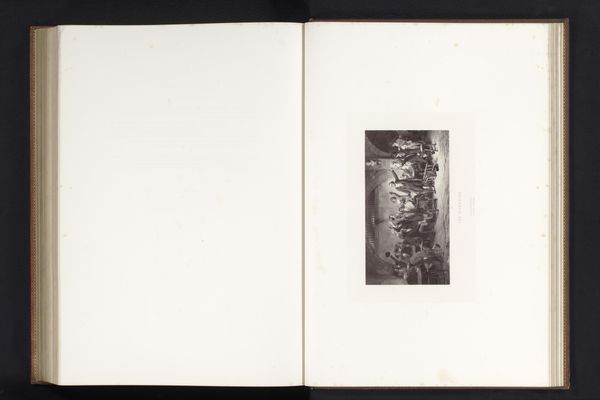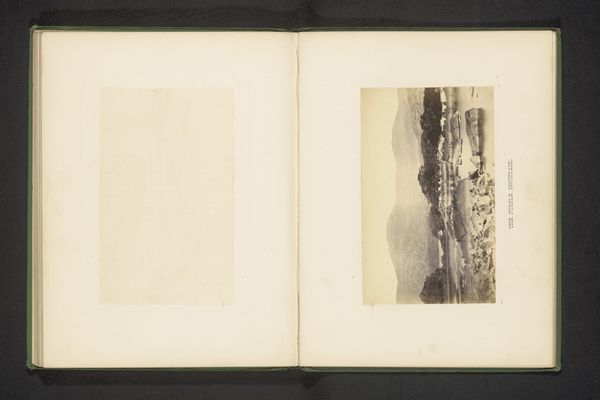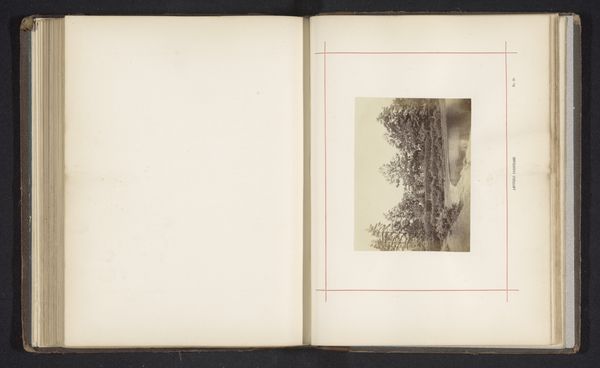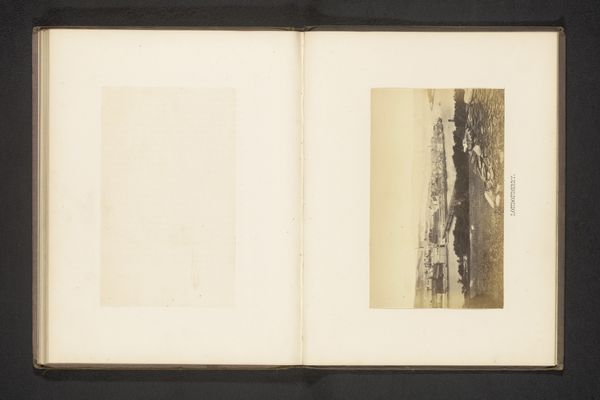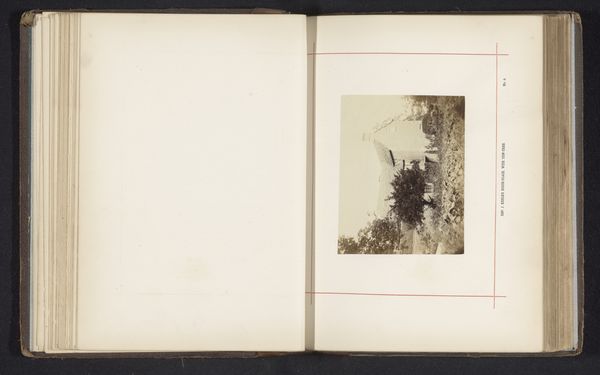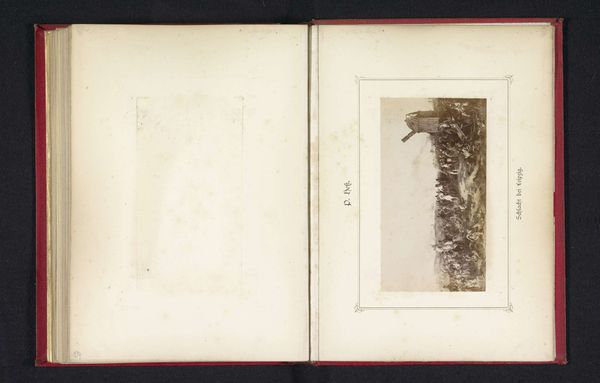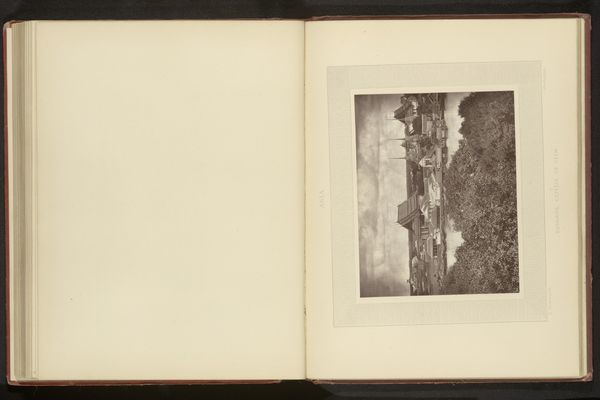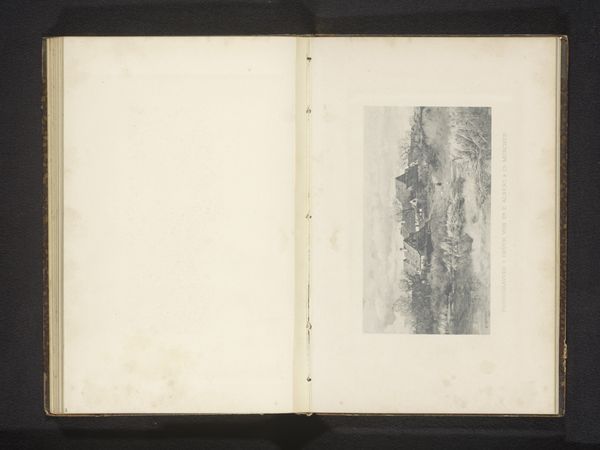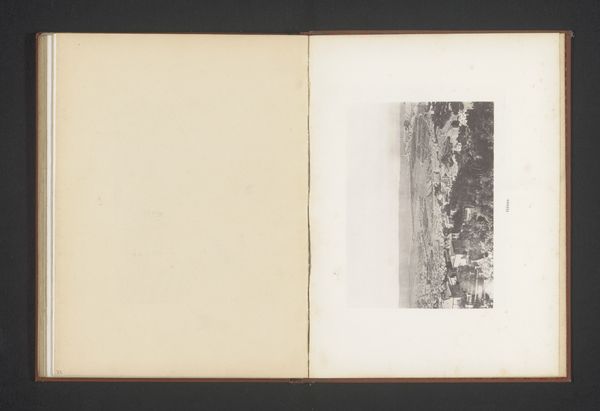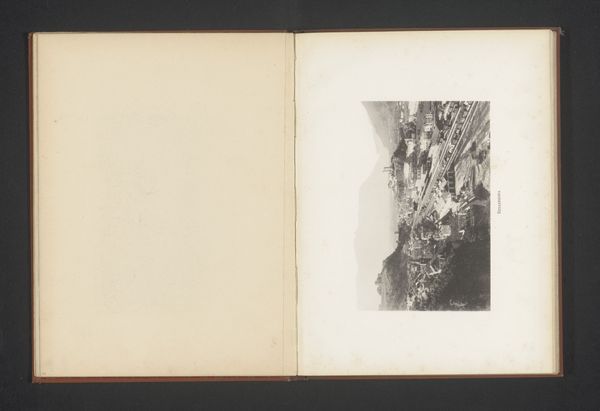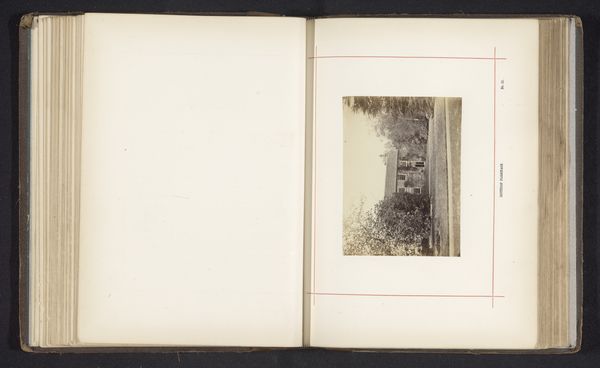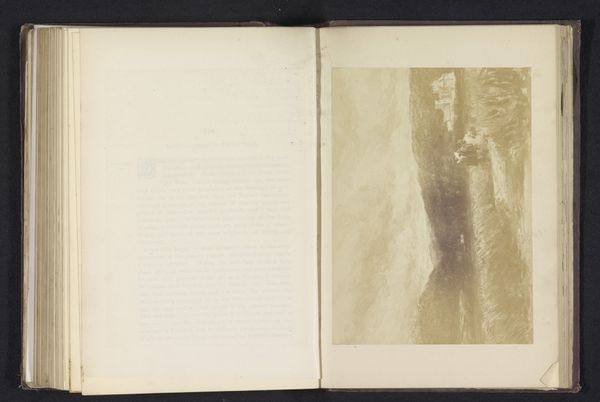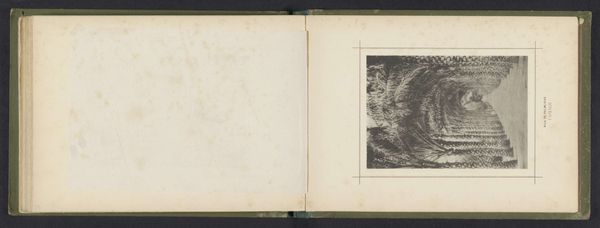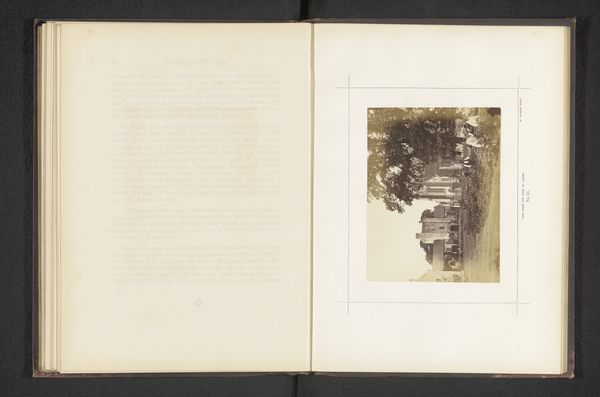
Fotoreproductie van een schilderij, voorstellende Slag bij Zorndorff c. 1875 - 1880
0:00
0:00
Dimensions: height 93 mm, width 137 mm
Copyright: Rijks Museum: Open Domain
Curator: What strikes me immediately is the relentless chaos rendered through this sepia-toned lens. A swarming mass of humanity and horsemanship, dissolving into a blurred horizon. Editor: Here we have a photomechanical print from around 1875-1880 of an anonymous artwork: A photographic reproduction depicting "The Battle of Zorndorf." The original image was most likely a genre painting. The photograph itself is adhered to an album page. Curator: Right, the source is critical. As a reproduction of a painting, it's interesting how the photograph further obscures the romanticized violence of the original. The act of photographic reproduction diminishes the visceral, arguably romantic, intention of the initial painted canvas. How was conflict framed and then *re-framed*? Who controlled the narrative then, and how is that impacted by the mediation we see here? Editor: Indeed, it highlights how materials shape meaning. A painting meant to glorify or historicize becomes an easily disseminated image. Note also that mass-produced photographs altered art consumption and knowledge. Photography allowed wider access, influencing social understandings of art as material, information, and commodity. Did the industrial processes affect viewership of this print compared to the original artwork, and if so how? Curator: Mass production is everything here, especially if access to knowledge can lead to questions around historical power dynamics, for the lower classes and genders who would likely have been left out of a chance to view such work outside of these media. Editor: Absolutely, consider the role of photographic studios—the labor, the standardization—in making artworks and scenes accessible as images. And yet, doesn't the fading sepia, the visible glue marks, bring us back to the physical labor and tangible reality behind the mass consumption this photographic production would have enabled? The means of production themselves feel more physical now, the paper almost a precious relic? Curator: That's the tension here isn't it, the push and pull between its intended heroic historical narrative, versus this almost… nostalgic material reality and our interpretation. We have to question what is revealed, what is obscured and why, within the photographic choices being made by a creator whom is not the painter of the work itself. Editor: Food for thought about the convergence of industry and artistry! Curator: Exactly! A complex visual artifact from a transformative era, forcing us to contemplate multiple layers of mediation.
Comments
No comments
Be the first to comment and join the conversation on the ultimate creative platform.
